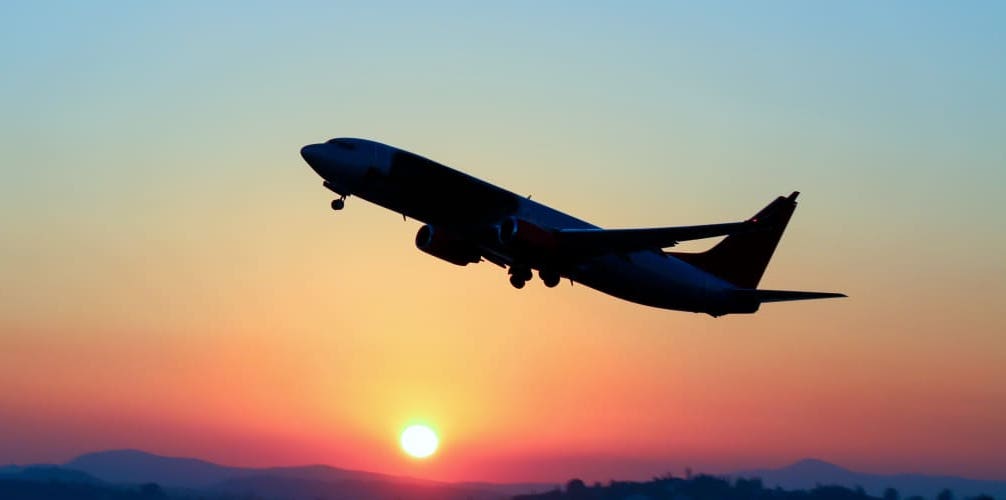The International Air Transport Association (IATA) called on governments in the Middle East to develop re-start plans to safely re-link their citizens, businesses and economies to global markets when the COVID-19 epidemiological situation permits. IATA also called for regional coordination to ensure that the plans can be efficiently implemented and urged governments to remain vigilant about the industry’s financial situation.
“Re-establishing air connectivity will energize the economic recovery from COVID-19. With millions of jobs at risk from the prolonged shutdown, not a day should be lost once the epidemiological situation enables a re-opening. Restarting safely after a year or more in lockdown will need careful preparations. At the national level it is important that governments work with industry, so everyone understands the benchmarks that need to be achieved to facilitate the lifting of travel restrictions. And at the regional level, where traffic is expected to ramp-up first, it is critical that governments are talking to each other so that all parties are aligned and ready for a restart,” said Kamil Al Awadhi, IATA Regional Vice President for Africa and the Middle East.
IATA data shows January air passenger traffic in the region was down 82.3% compared to January 2019. The ongoing crisis puts over 1.7 million jobs in the Middle East and $105 billion in GDP at risk.
“This is a unique situation. But we have good practices to rely on. Safety is the top priority for anything associated with aviation. That is because governments have long established global best practices for working together with industry and with each other. This same approach will help the re-start. There are two ends to every route. Both must be prepared or the restart cannot happen,” said Al Awadhi.
IATA highlighted two critical areas of areas where governments need to work together:
- Operational restart
A successful operational restart will include bringing aircraft and terminals back into service. Airlines need to ready their crew, technical personnel and aircraft. After a year of lockdowns, this requires refresher training and checks. A regional overview is needed to (1) ensure that the one country’s restart qualifications are accepted by its regional partners and (2) ensure that sufficient infrastructure capacity is ready to meet demand as markets unlock.
- Travel Credentials
Testing and vaccinations will play a role in opening borders to travel as the pandemic comes under control. Simple, efficient, and harmonized standards for what credentials people will need to travel will boost consumer confidence and give strength to the recovery.
The ICAO Council’s recent approval of requirements for globally accepted COVID-19 test certificates, including the technology framework for secure digital versions and the future incorporation of vaccination certificates provides a global framework. Cooperation for a harmonized implementation across the Middle East will put the region on a solid footing for recovery.
IATA Travel Pass will help to conveniently manage health credentials, while protecting against fraud. “With Qatar Airways already piloting IATA Travel Pass and Emirates, Etihad and Gulf Air signed-up for trials, the Gulf is at the forefront of preparations,” said Al Awadhi.
Continued financial relief essential
The financial trauma of the COVID-19 crisis continues. In 2020 Middle East airlines posted losses of $7.1billion in 2020; a loss of $68.47 for each passenger flown. With traffic at less than 20% of 2019 levels, the cash burn continues even with severe cost-cutting.
Airlines in the region received $4.8 billion in government aid in 2020. Most of this support ($4.1 billion) was distributed through direct cash injections. Despite this several airlines in the Middle East remain at risk of bankruptcy or business administration.
“A financially viable air transport sector will be needed to energize the recovery. Government relief for airlines has avoided massive failures that would jeopardize a restart. This has not been uniform across the region. With no clear timeline to recovery the situation is far from resolved. Governments that have provided relief will need to be prepared for more. And governments that have not yet stepped-up must recognize the growing risks to their economies as the crisis drags on,” said Al Awadhi.
Middle East Aviation - 2020 in Numbers:
- A 72% drop in passenger demand in the Middle East compared to 66% globally. Passenger demand is back to 1998 levels.
- A 63% drop in capacity in Middle East compared to 57% globally
- Air cargo was a bright spot for Middle East carriers, cargo volumes only dropped 10%.
- However, this was not enough to offset the losses from the passenger side of the business.
- Middle East airlines lost $7.1bn
- Airlines in the Middle East lost -$68.47 for every passenger they flew in 2020 compared to a loss globally of $66.04
- Connectivity fell by 60% at the low point of the crisis. Before the crisis there were 1060 unique international routes at the low point of the crisis there was 440. And the density of those connections has become much thinner.
- Job losses could grow to 1.7 million in Middle East in aviation and related industries
- GDP could fall by up to $105 billion supported by aviation in the region






































